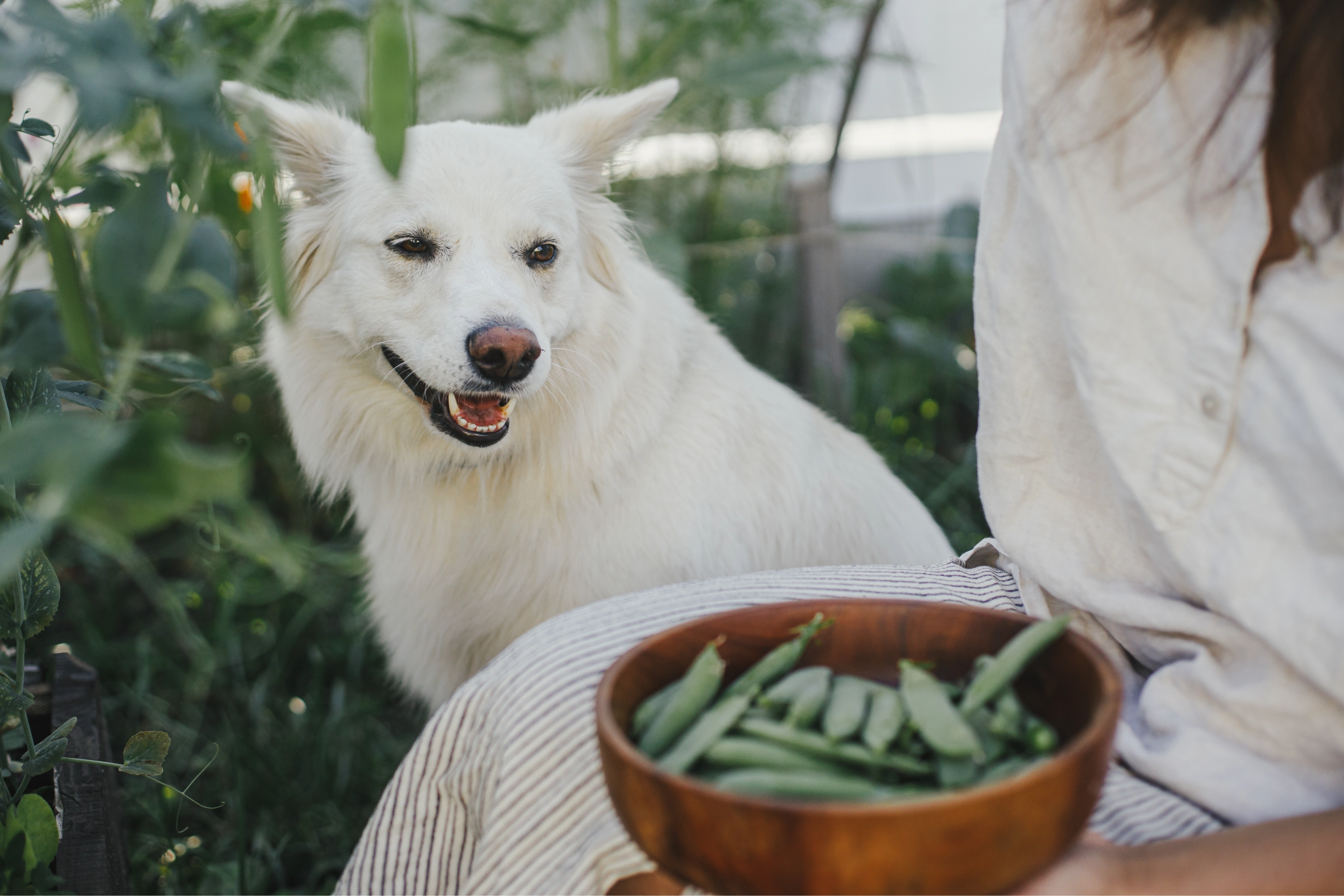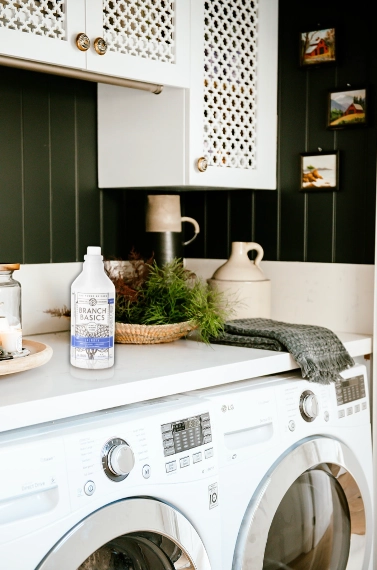What is Biohacking, and How Can It Apply to Dogs?
Biohacking is a concept rooted in optimizing health and longevity through science-backed interventions, often involving personalized nutrition, environmental modifications, and lifestyle adjustments. While it’s widely used in human health, biohacking principles can be applied to our canine companions to extend both healthspan (the number of years spent in good health) and lifespan (total years lived).




Dogs, like humans, are subject to aging-related processes such as oxidative stress, inflammation, and cellular senescence—when cells lose function and accumulate in tissues, driving aging.
Biohacking your dog’s longevity means strategically reducing these age-accelerating factors while enhancing biological resilience through diet, supplementation, and lifestyle optimization.
1. Use Diet to Influence Longevity Genes, aka Nutrigenomics
Nutrigenomics is the study of how diet influences gene expression. Certain foods can activate genes linked to longevity, reducing the risk of age-related diseases.
Actionable Steps:
- Incorporate polyphenol-rich foods: Blueberries, turmeric (curcumin), and green-lipped mussels contain bioactive compounds that can reduce oxidative stress and inflammation (Gordon et al., 2019).
- Feed a whole-food diet: Processed kibble often lacks bioactive compounds found in fresh, organic whole foods. Studies suggest that dogs on a fresh-food diet experience improved microbiome diversity and metabolic health (Watson et al., 2022).
- Support mitochondrial health: Mitochondria are the powerhouses of cells, and their dysfunction accelerates aging. Nutrients like Coenzyme Q10 (CoQ10) and L-carnitine support mitochondrial function and have been linked to improved longevity in dogs (Jenkins et al., 2018).
2. Optimize The Gut Microbiome
The gut microbiome plays a pivotal role in immune function, inflammation control, and even brain health. Dysbiosis (microbial imbalance) is linked to accelerated aging and chronic disease in both humans and dogs.
Actionable Steps:
- Prebiotics and probiotics: Fermented foods (like kefir) and targeted probiotic strains can support a diverse microbiome, reducing systemic inflammation (Herstad et al., 2017).
- Reduce ultra-processed foods: Artificial preservatives and fillers can negatively impact the gut microbiota, promoting inflammatory pathways.
3. Explore Cellular Senescence and Senolytics
Aging cells that no longer function optimally contribute to chronic disease. Recent research in longevity science has explored compounds that clear out these aged, dysfunctional cells to slow aging called senolytics.
Actionable Steps:
- Fisetin supplementation: A plant-derived flavonoid (found in strawberries and cucumbers), fisetin has been shown to selectively remove senescent cells in mammals (Yousefzadeh et al., 2018).
- Quercetin-rich foods: Apples and capers contain quercetin, a natural senolytic that may help delay cellular aging.
4. Reduce Chronic Inflammation aka “Inflammaging”
Chronic low-grade inflammation, or “inflammaging”, is a major driver of age-related diseases. Key interventions can help mitigate this process.
Actionable Steps:
- Omega-3 fatty acids: Found in wild-caught fish and algae oil, omega-3s reduce systemic inflammation and support cardiovascular and cognitive health (Pan et al., 2018).
- Curcumin (Turmeric extract): A potent anti-inflammatory, curcumin has been shown to suppress pro-inflammatory cytokines linked to arthritis and aging (Aggarwal et al., 2013).



5. Reduce Toxins and Enhance Recovery
Dogs are regularly exposed to environmental toxins that can accelerate aging, including endocrine disruptors and heavy metals. Exposure occurs when walking on chemicals, Minimizing these exposures and enhancing detoxification pathways can significantly impact longevity.
Actionable Steps:
- Avoid plastic food bowls and storage: Plastics contain bisphenol A (BPA) and phthalates, which can interfere with hormones and promote oxidative stress. Use stainless steel or ceramic alternatives.
- Air and water filtration: Filtering tap water removes heavy metals and contaminants that contribute to chronic disease.
- Grounding, orEarthing: Direct contact with natural surfaces like grass or soil has been shown to reduce inflammation and improve recovery (Chevalier et al., 2012).
- Choose pet-safe cleaning products: Opt for non-toxic, biodegradable cleaners free from parabens, phthalates, formaldehyde-releasing preservatives, and artificial fragrances. Some reputable non-toxic brands include:
- Branch Basics – A plant-based, fragrance-free concentrate that can be diluted for multiple uses.
- ECOS Pet-Friendly Cleaner – Free of dyes and harmful solvents, safe for pet areas.
- Seventh Generation Free & Clear – No synthetic fragrances or harsh chemicals.
- Force of Nature – Electrolyzed water cleaner that replaces conventional disinfectants.
- Dr. Bronner’s Castile Soap – A natural, multi-use cleaner made with organic oils.
- Avoid aerosol sprays and plug-in air fresheners: Many air fresheners contain synthetic phthalates and formaldehyde, which can impair respiratory health and act as endocrine disruptors. Instead, opt for natural air purifiers like beeswax candles, activated charcoal bags, or essential oil diffusers (ensuring the essential oils are pet-safe).
- Use simple, natural alternatives: Vinegar, baking soda, lemon, and castile soap effectively clean surfaces without exposing pets to toxic residues.
- Rinse floors and surfaces thoroughly: Even when using mild cleaners, always rinse pet-accessible areas, as residue can be absorbed through paws or ingested during grooming.
Evaluating Household Products for Pet Safety
Pet owners can review the toxicity of household cleaning products using the following resources:
- Environmental Working Group (EWG) – Provides safety ratings for household cleaning products based on their ingredient toxicity.
- National Institutes of Health (Household Products Database) – A searchable government database of chemical ingredients and their associated health risks.
- Made Safe (madesafe.org) – Certifies products free from known harmful chemicals and toxins, including pet-safe options.
- ASPCA Poison Control Center – Offers a list of toxic and non-toxic substances for pets.
Research on Household Toxins and Pet Health
- Sutton, P., et al. (2017). Toxic environmental chemicals: The role of environmental exposures in pet and human health. Environmental Health Perspectives, 125(9), 095002.
- Overgaard, C. B., et al. (2021). Household air pollution and pet health: Impacts of volatile organic compounds and particulates. Journal of Veterinary Science, 22(4), 378-391.
- Park, J. H., et al. (2018). Phthalates and their impact on endocrine function in companion animals. Toxicological Research, 34(2), 109-117.
By switching to pet-safe cleaning products, filtering water, reducing plastic exposure, and allowing pets to spend time in natural environments, pet owners can dramatically reduce their dog's toxin burden and support long-term health and longevity.
The Tail End:
Biohacking your dog’s longevity doesn’t require expensive interventions—it’s about leveraging scientifically backed strategies to optimize health and delay aging-related decline. You can extend your dog's health and longevity by fine-tuning nutrition, reducing inflammation, optimizing the microbiome, and avoiding environmental toxins. And do keep an eye out: Our experts at FutureProof Pet are working on something to make implementing a lot of the above as easy as giving Fido a treat.



References:
- Aggarwal, B. B., & Sung, B. (2013). Pharmacological basis for the role of curcumin in chronic diseases: An age-old spice with modern targets. Trends in Pharmacological Sciences, 34(3), 151-159.
- Chevalier, G., Sinatra, S. T., & Oschman, J. L. (2012). Earthing: Health implications of reconnecting the human body to the Earth's surface electrons. Journal of Environmental and Public Health, 2012, 291541.
- Gordon, O. N., Luis, P. B., Ashley, R. E., & Schneider, C. (2019). Nutritional and pharmacological implications of turmeric and curcumin: Bioavailability and metabolism. Molecular Nutrition & Food Research, 63(9), 1800485.
- Herstad, H. K., et al. (2017). A diet change from dry food to raw food reduces fecal inflammatory markers in healthy adult dogs. Veterinary Record, 180(5), 122.
- Jenkins, E. K., et al. (2018). Mitochondrial bioenergetics and CoQ10 supplementation: A role in canine longevity? Frontiers in Veterinary Science, 5, 190.
- Pan, Y., et al. (2018). Omega-3 fatty acids reduce cognitive decline in aged canines. Neuroscience & Biobehavioral Reviews, 98, 229-239.
- Watson, A. L., et al. (2022). Fresh-food feeding and gut microbiome diversity in companion animals: A review. Journal of Animal Science, 100(1), skac001.
- Yousefzadeh, M. J., et al. (2018). Fisetin is a senotherapeutic that extends health and lifespan. EBioMedicine, 36, 18-28.
Materials and other information provided on our Futureproof Pet website are for general informational purposes only and do not constitute medical or other professional advice. We provide no warranty and accept no responsibility or liability for the accuracy or the completeness of the information and materials contained in this website, including the personal opinions published in views, blog posts, opinion pieces or articles that comprise opinion pieces. The information provided by this website is not intended to address the specific circumstances of any particular individual or animal, sometimes links to external sites over which we have no control, and is not necessarily comprehensive, complete, accurate or up-to-date. Website materials should never be a substitute for conferring directly with professionals with respect to your particular situation.
Explore the Lab
Read More Articles

Join Our Pack
And recieve EXCLUSIVE pet longevity tips, EARLY ACCESS to launches, and VIP perks.


